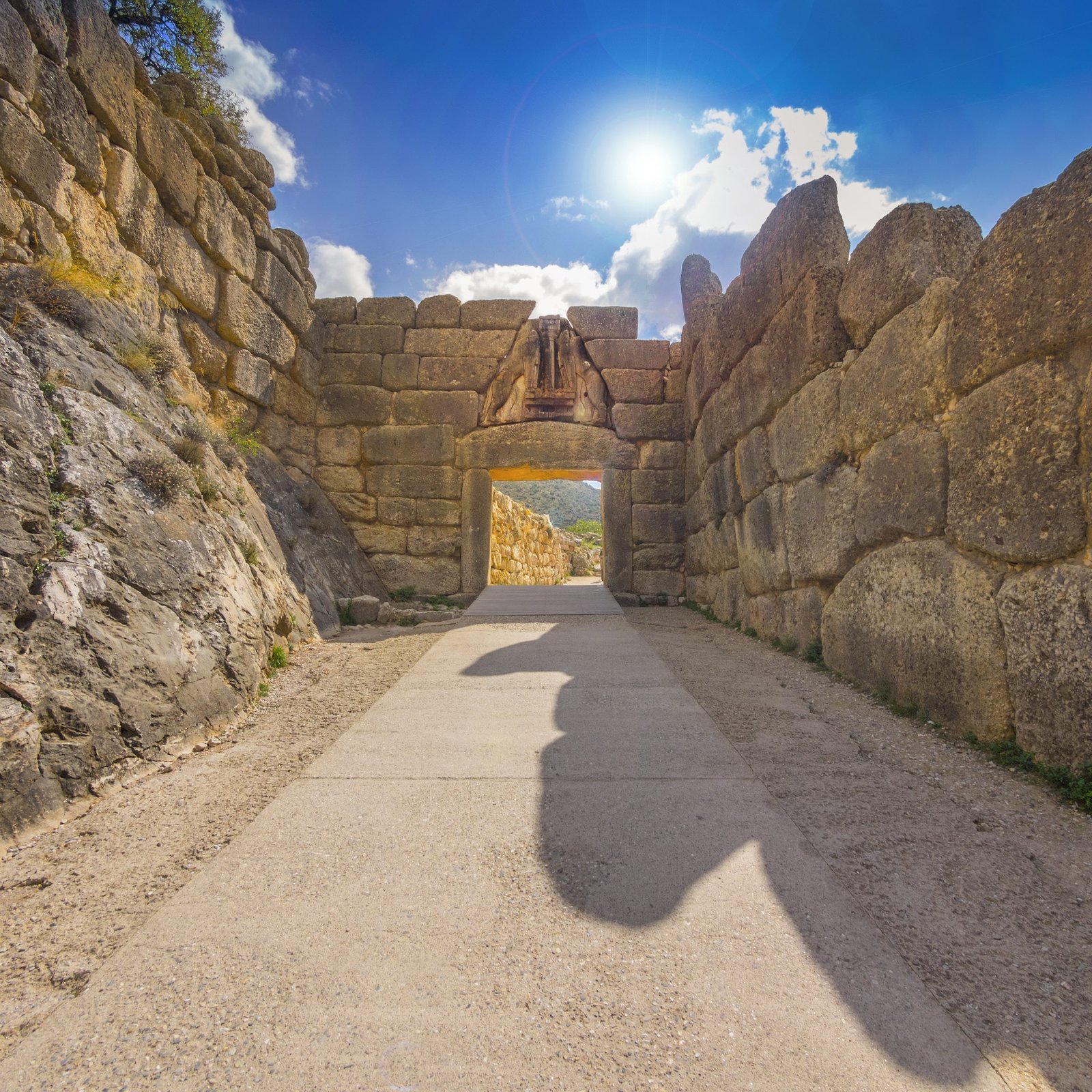Mycenae Greece is an important archaeological site that stands in the northeastern part of the Peloponnese, near the village of Mykines. Located about 120 kilometers southwest of Athens, the site sits on a low hill surrounded by higher mountains. This position offered strong natural defenses and clear views of the Argolis plain. As a result, the ancient city grew into a powerful center of the Mycenaean civilization.
According to Greek mythology, Mycenae served as the kingdom of King Agamemnon, the leader of the Greeks in the Trojan War. Ancient poets such as Homer often mentioned Mycenae in their epic stories. Over time, historians and archaeologists connected the city’s ruins with these myths. In the late 19th century, Heinrich Schliemann began excavating the area. He uncovered royal tombs and valuable artifacts, which supported the link between the site and ancient legends.
The Mycenaean civilization reached its height between 1600 and 1100 BCE. During this period, the city developed large palaces, strong fortifications, and wide trade networks. Mycenae traded with Egypt, Crete, and other parts of the Mediterranean. Also, the society used a written script known as Linear B, mainly for keeping records. After 1100 BCE, the civilization declined, but the city’s impressive remains still stand today.
Visitors enter the ancient site through the Lion Gate. This massive entrance features two carved lions above a stone doorway. The gate remains one of the oldest examples of monumental sculpture in Europe. Beyond the gate, travelers can explore the ruins of palaces, storehouses, and royal graves. Moreover, Grave Circle A contains six deep shaft graves, where archaeologists found gold masks, jewelry, and weapons.
Nearby, the Treasury of Atreus—also called the Tomb of Agamemnon—displays advanced engineering. This large beehive-shaped tomb uses massive stone blocks and a tall vaulted ceiling. Its entrance and interior impress many visitors with their size and symmetry.
The archaeological site opens daily, except on major public holidays. Spring and autumn offer the best weather for exploring the ruins. Summer can bring high heat, so early morning visits work best. Visitors should wear good walking shoes and bring water, sunscreen, and a hat.
Next to the site, the Archaeological Museum of Mycenae displays pottery, tools, statues, and other discoveries. As a result, the museum provides helpful signs and exhibits to explain the history and culture of the area.
In conclusion, Mycenae Greece offers a powerful journey into Greece’s distant past. The site combines history, myth, and impressive architecture. It gives every visitor a chance to walk through the remains of a great civilization.



Comment (0)